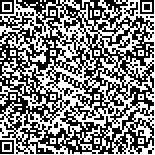下载中心
优秀审稿专家
优秀论文
相关链接
摘要

地震堰塞湖的破坏性不亚于地震灾害的直接破坏,开展堰塞湖的危险性评估,对灾后重建具有重要的参考意义.利用高分辨率遥感数据,结合辅助数据,确定了汶川灾区52处主要堰塞湖的名称、空间位置,识别出其鲜明的线状空间分布特征.堰塞湖的危险性评价,分为极度危险(1个)、高度危险(5个)和危险(46个)3个等级.遵循溃坝威胁区确定原则和方法,对堰塞湖溃坝威胁区进行了分析和划分,结果表明,重灾区受堰塞湖溃坝威胁的总面积为963.27km2,涉及18个县市(区)的134个乡镇.最后,对汶川地震重灾区的重建规划和堰塞湖风险规避提出了初步的建议.
Wenchuan Earthquake has seriously causedmanyhuge landslides in the rivers in SiChuan Province. As a re-sult, hugewater volumewasblocked in the rivers and numerousdammed lakes appeared in the following days, whichmay result in inundation on the lake area and flooding disaster in the lower reaches. Therefore, it is urgent to reconnoitre the exsited dammed lakes and its spatialdistribution, tomonitor the stability of these dams and to evaluate the potential inun-dation areawhen the dam-break events occur.Incorporating the basic information ofdammed lakes provided by otherministries, high resolution remote sensing mi-ageries(including Spaceborne, Airborne and Unmanned Aerial Vehicle) from May, 12 to June, 12 2008, were used to confine the spatial distribution and to reconnoitre these dammed lakes. Based on the‘Atlas of Sichuan Province in 2001’,combiningwith‘Sichuan Electronic Map in 2008’and‘1∶50000 topographicmap’aswel,l mostof the dammed lakeswere named from the nearestvillage atthe same riverside, while otherdammed lakes located deeply in themountains with scarce villageswere named from a nearer village, with serialnumbers.Up to June 12,2008,we have identified total 52 dammed lakes in the heavily-affected area of‘Wenchuan Earth-quake’. The spatial distribution with high precision longitude and latitude of the dammed lakes, indicates a significant linear feature, which is consistentwith earthquake faults.The risk evaluation of the dammed lakes in the heavily-affected area of‘Wenchuan Earthquake’, was carried out mainly by using themonitoring results ofhigh resolution remote sensing datasets and the authoritatively published results.According to the scale, the composition of the dams, the size and water storage capacity of these lakes, the distribution of the downstream cities and towns, population status and economic development levels, the possible affected area and the potential mi pact, the risk of the dammed lakeswere divided into three levels: ExtremelyDangerous, HighDangerous and Dangerous. Of the 52 dammed lakes, Tangjiashan is the only one in the Extremely Dangerous leve,l while the Xiao-Jiaqiao, Laoyingyan, Shiban’gou, Tangjiaba (Nanba), Changtan(Xiaogangjian)are 5 dammed lakes in the High Dan-gerous leve,l and the rest46 dammed lakes are in Dangerous leve.l Principles fordetermining the potential flooded areawhen dam-break occurswere developed:1. the safety, is taken as themost mi portantobjective;2. the inundation area should be determined in accordancewith sufficientand reliablemoni-toring results and basic datasets; 3. the region should notbe over-extended. Further, we also developed themethods for confining the potential inundation area, bywhich the total acerage of the potential inundation area determined amount to 963.27 square kilometers, involving the 134 townships of18 counties (districts). At last, prelmi inary suggestionswere proposed to avoid risks of the secondary disasters ofdammed lakes in the reconstruction planning forheavily-affected area in‘Wenchuan Earthquake’.

